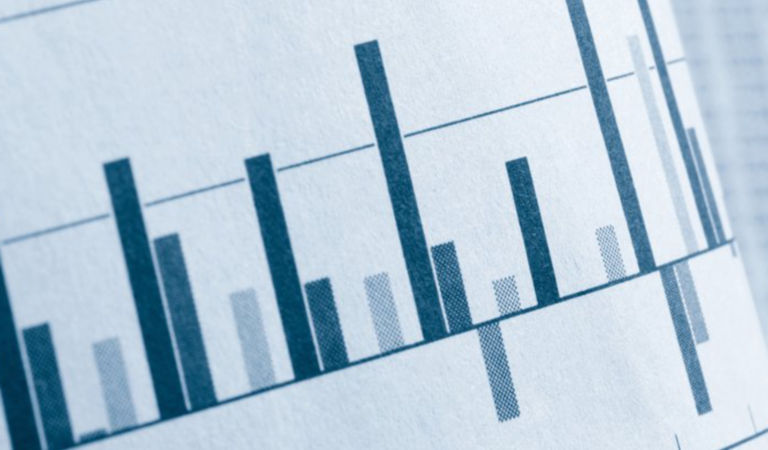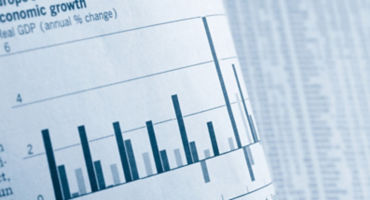Equities
Global equities (-0.2%) marginally declined during the month, ending May with an 8.4% gain year to date. Labor markets remained resilient and first-quarter earnings were stronger than expected, although risk sentiment was constrained by geopolitical instability, tighter monetary policy, and weaker manufacturing data. The US Federal Reserve (Fed), the European Central Bank (ECB), and the Bank of England (BOE) raised interest rates by 25 basis points (bps) amid persistently high core inflation. Increasingly bullish views on Japanese equities propelled the Nikkei Index to a multi-decade high, thanks to favorable earnings and valuations, corporate governance improvements, supportive monetary policy, and firmer signs that the country’s economy is gaining momentum. Disappointing Chinese economic data sparked concerns about the durability of the country’s post-COVID recovery, increasing pressure on policymakers to provide stimulus. China’s services sector activity expanded at the slowest pace in four months, the manufacturing sector contracted under pressure from lackluster global demand, and the property market remained subdued. In Germany, a downward revision to first-quarter GDP showed that Europe’s largest country is in recession.
US
US equities (+0.4%) were driven higher by a continued rally in a narrow group of mega-cap technology companies, which benefited from investor optimism about their earnings potential and growth prospects, and exuberance surrounding generative artificial intelligence. Markets were relieved after the US House of Representatives passed a bill to suspend the US debt ceiling until January 2025 and limit government spending, advancing the legislation to the Senate just days before the US default deadline on June 5. As expected, the Fed increased interest rates by 25 bps to a target range of 5% – 5.25%. Fed Chair Jerome Powell suggested the Fed is at, or near, the end of its hiking cycle and that policymakers would need to see signs of stronger-than-expected growth in the economy, hiring, and inflation to continue raising rates. The headline Consumer Price Index edged lower to 4.9% year over year in April; however, a slight increase in the core Personal Consumption Expenditures Price Index — the Fed’s preferred inflation gauge — and accelerating consumer spending fueled debate about the persistence of inflation, generating more uncertainty about near-term Fed policy. Of the 99% of companies in the S&P 500 Index that had reported first-quarter earnings, the blended year-over-year earnings decline for the index was 2.1%, significantly better than estimates of a 6.7% decrease. The forward 12-month price-to-earnings ratio stood at 18.0.
Economic data released during the month was mixed. The labor market remained buoyant despite mounting concerns about the potential impact of high inflation, rising interest rates, and tightening credit conditions. In April, nonfarm payrolls surprisingly increased by 253,000 after a downwardly revised gain of 165,000 in March, while the unemployment rate fell to 3.4%. Job openings rose sharply, and average hourly earnings unexpectedly grew at the fastest pace since July 2022, accelerating 0.5% from March. Strength in the labor market and rising income growth supported consumer spending; retail sales rebounded by a modest 0.4% in April, while overall consumer spending sharply accelerated by 0.8% following a 0.1% gain in both February and March, suggesting that upside risks to inflation remained intact. However, record-high credit card debt and higher financing costs could pose headwinds to consumer outlays in the months ahead. The Conference Board’s Consumer Confidence Index slid to a six-month low in May, highlighting growing uncertainty about the job market and the economy. Housing market data was mixed in April. Existing-home sales were stifled by limited inventory, rising mortgage rates, and affordability concerns, while a lack of housing stock propelled construction and new-home sales higher.
The manufacturing sector contracted for the seventh consecutive month as the Institute of Supply Management (ISM) Manufacturing Index fell slightly to 46.9. Higher interest rates weighed on demand and new orders, but employment rose to a nine-month high, and inflation waned. The services sector remained the primary driver of US economic growth, with the ISM Services Index lifting 0.7 points, to 51.9, in April. The Flash Composite Purchasing Managers’ Index (PMI) from S&P Global revealed that services sector output in May rose to a 13-month high, thanks to strong demand for travel and leisure, which kept inflation pressures broadly elevated across the sector. The National Federation of Independent Businesses (NFIB) Small Business Optimism Index fell to 89 — the lowest level in a decade — as firms curbed investment plans amid dimmer prospects for sales and the economy.
Eight of the 11 sectors in the S&P 500 Index (+0.4%) posted negative results. Information technology (+9.5%) was the best-performing sector, led higher by semiconductors & semiconductor equipment (+20.6%) and software (+7.8%). Communication services (+6.2%) was another notable outperformer, as interactive media & services (+12.9%) contributed to returns. Consumer discretionary (+3.2%) rose, driven by broadline retail (+13.3%) and automobiles (+19.9%). Energy (-10.0%) was the worst-performing sector, led lower by oil, gas & consumable fuels (-9.9%). Materials (-6.8%) and utilities (-5.9%) also declined.
Europe
European equities (-2.8%) slid lower. The European Commission upgraded its economic growth forecast for the European Union to 1% in 2023 and 1.7% in 2024, up from February’s estimates of 0.8% and 1.6%, respectively. The Commission cited Europe’s success in managing the energy crisis, a robust job market, and ongoing government stimulus as key factors underpinning the improved outlook. The central banks of Norway and the UK lifted interest rates by 25 bps and signaled more hikes to come. The ECB slowed its pace of rate hikes to 25 bps, signaling that it will continue to tighten policy amid concerns about rising wage growth, buoyant services sector spending, and inflation that remains well above the bank’s 2% target. The move followed the release of the Bank Lending Survey that indicated a substantial and stronger-than-expected tightening in European credit conditions. Preliminary estimates showed that eurozone core inflation decelerated to 5.3% in May, from 5.6% in April, a welcome development for the ECB. First-quarter earnings for companies in the STOXX 600 Index were much better than expected, with estimates showing that earnings increased 9.6% from a year earlier.
Europe’s manufacturing sector slipped further into contractionary territory as the Eurozone Manufacturing PMI slid to 44.8 in May, from 45.8 in April. A steeper downturn in production volumes across the region was accompanied by the sharpest drop in new orders in six months. Encouragingly, companies continued to hire and refrained from cutting staff, while supply chains improved and input and output prices declined. The Flash Eurozone Composite PMI in May eased from the prior month but showed solid, albeit uneven, economic growth in the region, as surging growth in the services sector contrasted with a sharper contraction in manufacturing. In the services sector, job growth was the second highest in a year, new orders rose for the fifth straight month, and robust demand caused services inflation to accelerate. The European Commission’s Economic Sentiment Indicator slipped by 2.5 points in May, to 96.5, as modestly higher consumer confidence was offset by a fourth straight drop in confidence among business managers.
In Germany (-1.7%), strong corporate earnings were overshadowed by a further drop in the ZEW Indicator of Economic Sentiment in May and a downward revision to first-quarter GDP growth, which showed that Germany was in recession. Exports to China dropped 11.3% in the first four months of 2023, compared to the same period a year ago, adding to fears of a prolonged economic downturn. In the UK (-5.2%), core inflation accelerated to 6.8% year over year, from 6.2%, triggering markets to anticipate a terminal interest rate as high as 5.5% by the end of 2023. The BOE indicated that it no longer anticipates a recession, but the bank’s governor, Andrew Bailey, acknowledged that the country is facing a wage-price spiral. In Sweden (-2.8%), financial strains at the country’s largest commercial real estate firm heightened concerns about financial troubles in the property market.
Pacific Basin
Pacific Basin equities (+1.3%) were led higher by Japan (+4.5%), where the Nikkei Index rose to a multi-decade high. Investors grew more optimistic about the outlook for Japanese equities and the economy amid solid first-quarter corporate earnings, attractive valuations, corporate governance reforms, easy monetary policy, and a consumption-led recovery. GDP expanded at a 1.6% annualized pace in the first quarter — double consensus estimates — underpinned by a post-pandemic rebound in domestic consumption that was supported by rising wage growth and government stimulus. Core inflation reaccelerated to 3.4% year over year in April, driven by the services sector. This bolstered views that the central bank could tweak its ultra-loose monetary policy. The Japanese government announced that it will allow seven of the nation’s major power companies to raise household electricity prices from June, a move that should support corporate earnings and augment inflation. Japan’s unemployment rate fell for the first time in three months, dropping to 2.6% in April.
In Australia (-2.8%), the Reserve Bank of Australia (RBA) surprised markets by increasing interest rates by 25 bps, to 3.85%, sending bond yields and the Australian dollar higher. After three months of cooling price pressures, consumer price inflation unexpectedly accelerated to 6.8% in April, from 6.3% in March, increasing uncertainty about whether the RBA will continue to raise interest rates at its next policy meeting in June. However, other macroeconomic data suggested that the economy was slowing; consumer sentiment in May fell toward its lowest level since the onset of the pandemic, and the labor market softened in April as the unemployment rate unexpectedly increased to 3.7% and job growth shrank by 4,300. Furthermore, wage inflation was unchanged in the first quarter, and job openings have declined in recent months.
Hong Kong (-8.9%) emerged from recession in the first quarter, with spending reviving after borders reopened. GDP in the first quarter expanded 2.7% from a year earlier, well above expectations of 0.5%, marking the first quarterly gain in more than a year. The Hong Kong Monetary Authority (HKMA) lifted its benchmark interest rate by 25 bps, in lockstep with the Fed. Banks raised their main lending rates for the first time this year, and the HKMA loaned HK$3.77 billion (US$482 million) — the largest amount of short-term cash borrowing in over two years — suggesting a growing demand for liquidity. Retail sales accelerated at the fastest pace on record, rising 40.9% year over year in March, thanks to a rebound in the economy and the return of tourists after several years of pandemic isolation.
In New Zealand (-5.5%), the central bank lifted interest rates by 25 bps, to a 14-year high of 5.5%, signaling that policy tightening was completed. In the first quarter, Singapore’s (-5.3%) economy contracted 0.4% from the fourth quarter, as a weakening global economy and a stuttering Chinese recovery increased the risk of recession.
Emerging Markets
Emerging markets (EM) equities (-1.0%) declined in May. Within EM, Latin America outperformed, while Asia and Europe, the Middle East, and Africa (EMEA) lagged.
Latin America equities (+0.2%) were led by Brazil (+3.1%), where inflation dipped to its lowest level since October 2020. The central bank left interest rates unchanged despite President Luiz Inácio Lula da Silva’s intense push for rate cuts and reduced constraints on government spending. Brazilian oil giant Petrobras announced its intention to shield domestic motorists from international price surges by absorbing costs. In Mexico (-4.0%), the central bank held rates steady at 11.25%, snapping a tightening cycle that lasted nearly two years. The bank also indicated that it would keep policy stable for an extended period after core inflation slowed to its lowest level since July 2002.
Asian equities (-0.7%) were dragged lower by China (-8.2%). Chinese equities slid into bear market territory after economic data released in May was broadly weaker than anticipated. Lackluster domestic and external demand, softening manufacturing and services sector activity, and weakening inflation all signaled a waning economic recovery, increasing pressure on policymakers to provide more substantial support. Geopolitical tensions with the West remained elevated, while the property sector was weighed down by slowing growth in house prices and a sharp drop in property investment. Taiwan (+7.3%) was bolstered by significant equity inflows and an agreement with the US on the terms of a new trade initiative. South Korea (+3.9%) approached a bull market, as investor enthusiasm over artificial intelligence sparked a rally in the nation’s semiconductor stocks. Thailand’s (-1.2%) voters decisively rejected the conservative, military-backed establishment, delivering a stunning win to pro-democracy opposition parties in the country’s general election. However, the parties face numerous challenges in building a coalition that is large enough to ensure victory.
EMEA (-3.3%) finished lower. South Africa (-6.7%) was hampered by an ongoing power crisis and international pressure stemming from US government allegations that it supplied weapons to Russia. Czechia equities (-13.9%) moved sharply lower; signs of easing inflation led the central bank to leave interest rates unchanged, although policymakers cautioned about upside price risks. Greece (+12.5%) surged after Prime Minister Kyriakos Mitsotakis’s conservative party secured a decisive victory in parliamentary elections, supporting stability in the region. In Turkey (+4.8%), President Recep Tayyip Erdoğan won the country’s runoff election to claim a third term in office.
Fixed Income
Performance across fixed income sectors was mixed versus duration-equivalent government bonds. Most sovereign yields rose and credit spreads widened, fueled by mounting US recession fears and continued rate hikes by many major central banks.
US economic data releases were relatively upbeat. Nonfarm payrolls rose more than expected, particularly in the professional and business services sectors. Weekly jobless claims edged higher but remained at levels consistent with a solid labor market. The NFIB Small Business Optimism Index fell to a level associated with low growth, as business owners worried about economic conditions. Annual headline inflation and the Producer Price Index were slightly below consensus estimates, although the costs of services rose. Industrial production rose on higher output of motor vehicles and parts, while an increase in military spending bolstered durable goods orders. The ISM Manufacturing Index remained in contraction, with higher borrowing costs overshadowing improvements in new orders and employment. Growth in the services sector lifted the Flash US Composite PMI to a 13-month high. Elevated mortgage rates curtailed mortgage applications and contributed to a decline in existing-home sales. In Europe, eurozone headline inflation rose amid higher energy and services prices. Germany’s IFO Business Climate Index and the ZEW Indicator of Economic Sentiment declined amid growing pessimism about the near-term economic outlook. In the UK, GDP grew at a lackluster pace in the first quarter amid high inflation and reduced consumer spending. China’s manufacturing PMI fell into contraction amid ongoing pressure from reduced global demand and weakness in the property market. A slowing global economy hampered Japan’s industrial production. Canada’s economy expanded in the first quarter, fueled by international trade and increased household spending. Australia’s unemployment rate ticked higher amid a slowdown in hiring and job losses.
Most major central banks continued to raise interest rates. The Fed, the ECB, and the BOE lifted rates by 25 bps; Norway’s Norges Bank hiked rates by 25 bps and signaled an additional increase in June; and the RBA pushed up rates by 25 bps, retaining guidance that further tightening “may be required.” In contrast, the BOJ kept its ultra-loose monetary policy settings unchanged despite rising inflation.
Most global sovereign bond yields increased. US yields rose, particularly at the front end of the yield curve, amid resilient cyclical data and progress toward a deal to suspend the debt ceiling. Markets priced in an additional Fed rate hike this summer. European yields ended slightly lower, driven by moderating growth and weakening economic sentiment. The ECB slowed its pace of policy tightening but retained its hawkish rhetoric as inflation remained well above target. UK gilts continued their substantial sell-off amid persistently high inflation, and the BOE indicated that quantitative tightening might need to be accelerated. In emerging markets, Brazilian rates fell meaningfully as declining inflation suggested that interest-rate cuts could come sooner than expected. South African bonds sold off substantially, with the central bank increasing interest rates to fight inflation. The Bloomberg TIPS index delivered a total return of -1.20%, and the 10-year breakeven inflation rate decreased by 3 bps, to 2.18%, during the month.
Global credit bonds underperformed duration-equivalent government bonds as spreads widened. Within the securitized sectors, agency mortgage-backed securities, commercial mortgage-backed securities, and asset-backed securities outperformed duration-equivalent government bonds. Within EM, local markets debt (-1.58%) underperformed external debt (-0.57%), in US-dollar terms. Spread narrowing contributed positively to external debt results, while higher US Treasury yields had a negative impact. Depreciation in EM currencies drove negative performance in local markets, while movement in EM rates benefited results.
Currencies
The US dollar outperformed versus most major currencies. European currencies declined on a downward GDP revision and signs of softening in cyclical data. The Swedish krona was the notable underperformer as high Swedish inflation left the currency vulnerable. The British pound weakened, driven by UK’s deteriorating inflation/growth trade-off along with its outsized and persistent fiscal deficit amid slowing global liquidity. The Japanese yen declined as markets moved to price in additional Fed hikes through the third quarter of this year, underscoring diverging near-term expectations of monetary policy in Japan and the US. EM currencies ended mixed. The South African rand tumbled as South Africa’s energy crisis continued. The Turkish lira declined following President Erdoğan’s reelection victory. The Colombian peso rallied on stronger-than-expected first-quarter GDP data and optimism over oil demand.
Commodities
Commodities (-6.1%) declined for the seventh straight month, with all four sectors ending in negative territory. Energy (-8.5%) fell for the seventh consecutive month as weaker-than-expected Chinese economic data pointed to lower energy demand. Gasoline (-1.3%) slipped, while the demand outlook for gas oil (-4.9%) and heating oil (-4.8%) was weighed down by China’s faltering economic recovery and tighter Fed policy. Crude oil (-9.9%) fell sharply as an accelerating contraction in China’s manufacturing sector added to signs that the economy of the world’s largest crude importer was losing momentum. Additionally, demand was curbed by appreciation in the US dollar, which made oil more expensive for holders of other currencies. US natural gas (-12.1%) slumped as sentiment on gas fundamentals became more bearish for the remainder of this year and into 2024, and domestic stockpiles were approximately 19% above their five-year average.
Industrial metals (-6.8%) finished lower, as a slower-than-expected recovery in Chinese demand pressured the sector. Lead (-5.7%) tumbled as investors cooled on the prospects for a robust Chinese expansion, while aluminum (-4.0%) and copper (-5.6%) extended their losses, erasing gains from earlier in the year that were fueled by speculation that China’s reopening would spur demand. Zinc (-14.8%) and nickel (-15.1%) fell significantly after China’s slowing manufacturing activity emphasized weakness in the top metals-consuming economy.
Precious metals (-1.8%) generated more modest losses. Gold (-1.3%) and silver (-6.1%) ended lower after US lawmakers delivered a bill to suspend the US debt ceiling, erasing gains from earlier in the month when prices surged to near-record levels on fears of a US default. Precious metals prices were also weighed down by resilience in the US economy, which increased the prospect that the Fed will keep interest rates higher for longer.
Agriculture & livestock (-1.7%) declined in May. Cotton (+3.8%) ended the month higher, supported by supply concerns caused by news that output in top grower China could decline this year after frigid weather delayed sowing and hurt plants in some areas. Feeder cattle (+4.2%) and live cattle (+3.2%) ended the month higher on persistently tight cattle supplies (the US beef cow herd reached its lowest level since 1962) and continued strong consumer demand despite higher prices. Cocoa (+2.9%) ended the month higher, rallying to six-year highs during the month, as quality concerns about the Côte d’Ivoire mid-crop threatened supplies in the face of rising global demand. Corn (+2.0%) advanced in May; dry weather threatened emerging US crops, offsetting better prospects for European, Russian, and Ukrainian crops. Sugar (-4.4%) prices fell during the month on the outlook for a bumper cane crop in Brazil. A plunge in crude prices during the month also hurt sugar; weaker crude prices undercut ethanol prices and could prompt mills to divert more cane crushing toward sugar production than ethanol, which would boost sugar supplies. Wheat (-3.0%) extended losses in May, hitting its lowest level since December 2020, and placing the commodity in the rare position of being cheaper than corn during the month, after the conditions of US crops were significantly better than forecast. Coffee (-3.5%) declined on weakness in the Brazilian real and dry weather in Brazil, which should accelerate the pace of the coffee harvest. Soybeans (-8.0%) fell sharply to the lowest level since December 2021, as top grower Brazil continued to ship its biggest-ever harvest. Lean hogs (-10.6%) prices plunged, driven by an oversupply of US pork at the beginning of the 2023 peak demand season.














Japan equity: Reason to believe
Continue readingBy
Toshiki Izumi, CFA, CMA